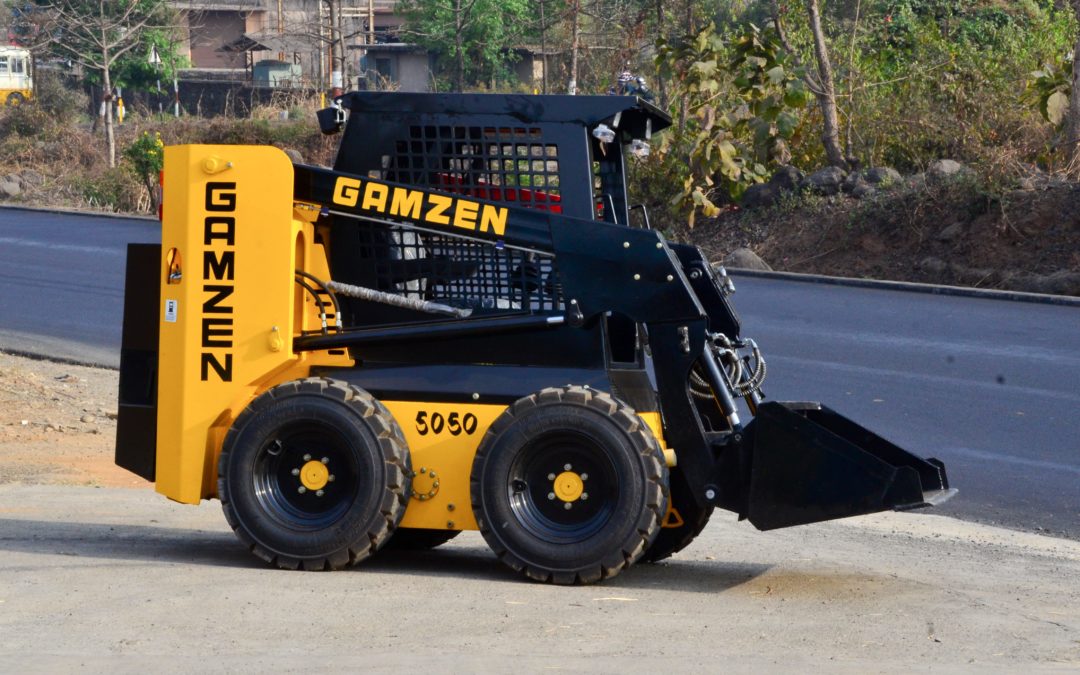Skid Steer Loader Maintenance: Best Practices for Efficiency and Longevity
I have been operating skid steer loaders for many years, and throughout my experience, I have learned the importance of regular maintenance and proper operating techniques to maximize efficiency and ensure the longevity of these powerful machines. In this article, I will share some valuable insights and best practices that can help you maintain and operate your skid steer loader effectively. Whether you are a seasoned operator or new to using a skid steer loader, these tips will help you get the most out of your equipment.
Regular Maintenance Practices
Regular maintenance is crucial to keep your skid steer loader in optimal working condition. By following a regular maintenance routine, you can prevent breakdowns, minimize downtime, and extend the lifespan of your machine.
Importance of Regular Maintenance
Routine maintenance is essential for identifying and addressing any issues before they escalate into major problems. It involves inspecting various components, checking fluid levels, and ensuring proper functionality. Regular maintenance reduces the risk of unexpected breakdowns, improves safety, and maximizes the overall performance of your skid steer loader.
Daily Inspection Checklist
Performing a daily inspection is a fundamental practice that every skid steer loader operator should follow. This checklist should include:
Checking for any visible leaks, loose fittings, or damaged hydraulic hoses
-
Inspecting tires for proper air pressure and signs of wear
-
Verifying that all lights, signals, and safety features are working correctly
-
Examining the condition of the bucket, teeth, and cutting edges for any signs of wear or damage
Scheduled Maintenance Tasks
In addition to daily inspections, scheduling regular maintenance tasks is vital for the long-term health of your skid steer loader. This includes:
Changing engine oil and filters at recommended intervals to ensure proper lubrication and prevent contamination
-
Inspecting and cleaning the air filters to maintain optimal engine performance
-
Checking and replacing fuel filters to prevent fuel contamination and improve engine efficiency
-
Greasing all necessary pivot points and components to minimize friction and extend their lifespan
Efficient Operating Techniques
Using proper operating techniques not only improves efficiency but also minimizes wear and tear on your skid steer loader. By following these guidelines, you can maximize productivity and longevity while ensuring the safety of both the operator and the machine.
Proper Operation and Handling of the Loader
To operate the skid steer loader efficiently, it is essential to be familiar with the machine’s controls and features. Training and certification are recommended for all skid steer loader operators to ensure they can handle the equipment safely and effectively.
Understanding Load Capacities and Limitations
Every skid steer loader has a specific load capacity, which should never be exceeded. Overloading the machine can lead to accidents, excessive strain on the components, and premature wear. It is crucial to be aware of the load limits and use the appropriate attachments for the task at hand.
Minimizing Wear and Tear During Operation
To minimize wear and tear during operation, consider the following:
Avoid abrupt starts, stops, and sudden directional changes that can strain the machine’s components.
-
Use the loader controls smoothly and avoid unnecessary movements.
-
Be mindful of the ground conditions and adjust the skid steer loader’s speed accordingly to prevent excessive wear on the tires and drivetrain.
-
Clear debris from the worksite to prevent damage to the machine and ensure efficient operation.
Proper Cleaning and Storage Procedures
Proper cleaning and storage procedures are essential for maintaining the performance and longevity of your skid steer loader. By following these guidelines, you can protect your equipment from corrosion, damage, and unnecessary wear.
Cleaning the Loader After Use
After each use, it is important to clean the skid steer loader thoroughly. Use a pressure washer or hose to remove dirt, mud, and debris from the machine, paying attention to hard-to-reach areas. Cleaning not only keeps your equipment looking good but also prevents the accumulation of contaminants that can cause damage over time.
Storing the Loader in a Suitable Environment
When not in use, storing the skid steer loader in a proper environment is crucial. Ideally, it should be stored indoors or under a protective shelter to shield it from the elements. Exposure to rain, snow, extreme temperatures, and direct sunlight can cause corrosion, fade paint, and deteriorate rubber components. If storing outdoors is unavoidable, consider using a weatherproof cover to protect the machine.
Considerations for Long-Term Storage
If you plan to store your skid steer loader for an extended period, there are a few additional steps to take:
Change the engine oil and filters to prevent any contaminants from settling and causing damage.
-
Drain and replace the coolant to prevent corrosion and freezing.
-
Apply a protective coating to exposed metal surfaces to prevent rust.
-
Inflate the tires to the recommended pressure and park the skid steer loader on blocks to relieve tire stress.
Effective Component Monitoring and Replacement
To ensure optimal performance and prevent major failures, it is essential to monitor your skid steer loader’s components and replace worn-out parts when necessary.
Monitoring Fluid Levels and Quality
Regularly check all fluid levels in your skid steer loader, including engine oil, hydraulic fluid, coolant, and fuel. Maintaining proper levels and ensuring the quality of the fluids prevents damage to vital components and ensures the smooth operation of the machine.
Inspecting and Replacing Worn-Out Parts
Inspect critical components of the skid steer loader, such as hydraulic hoses, belts, and filters, for signs of wear or damage. Replace any worn-out parts promptly to avoid unexpected failures or accidents. It is advisable to follow the manufacturer’s recommended maintenance schedule and use genuine replacement parts for optimal performance and reliability.
Importance of Using Genuine Replacement Parts
Using genuine replacement parts is crucial for the proper functioning and longevity of your skid steer loader. Genuine parts are specifically designed for your machine, ensuring compatibility and performance. These parts undergo rigorous testing and quality control, offering superior reliability and durability compared to aftermarket alternatives.
FAQs
How often should I perform maintenance on my skid steer loader?
Regular maintenance should be performed based on the manufacturer’s recommendations. Depending on your machine’s usage, this may range from daily inspections to scheduled maintenance every 100 or 250 operational hours. Adhering to a routine maintenance schedule will help prevent costly breakdowns and extend the lifespan of your skid steer loader.
What are the best practices for operating a skid steer loader to maximize its lifespan?
To maximize the lifespan of your skid steer loader, it is essential to follow proper operating techniques, perform regular maintenance, and use genuine replacement parts. Avoid overloading the machine, operate it smoothly, and be mindful of the ground conditions to minimize wear and tear.
Additionally, keep the loader clean, store it in a suitable environment, and monitor fluid levels and quality.
What are the key factors that can impact the lifespan of a skid steer loader?
Several factors can impact the lifespan of a skid steer loader:
Maintenance practices: Regular and proper maintenance significantly extends the machine’s lifespan.
-
Operating conditions: Harsh working environments, such as dusty or muddy conditions, can accelerate wear and tear.
-
Operator skills and habits: Proper training, good operating techniques, and adherence to recommended guidelines are crucial for maximizing the machine’s lifespan.
-
Quality of components: Using genuine replacement parts and high-quality fluids ensures optimal performance and durability.
Are there specific environmental conditions that can affect the longevity of a skid steer loader?
Yes, environmental conditions can significantly impact the lifespan of a skid steer loader. Exposure to extreme temperatures, excessive moisture, corrosive substances, and prolonged exposure to sunlight can accelerate wear and corrosion. It is essential to minimize the machine’s exposure to these conditions and take appropriate protective measures, such as storing it in a suitable environment and using protective coatings or covers.
In conclusion, implementing regular maintenance practices, following efficient operating techniques, ensuring proper cleaning and storage procedures, and monitoring and replacing worn-out parts are paramount in maximizing the efficiency and longevity of your skid steer loader. By adopting these best practices, you can optimize your machine’s performance, reduce the risk of breakdowns, and get the most out of your investment. Remember to always consult the manufacturer’s guidelines and seek professional assistance when needed to ensure the long-term health of your skid steer loader.

